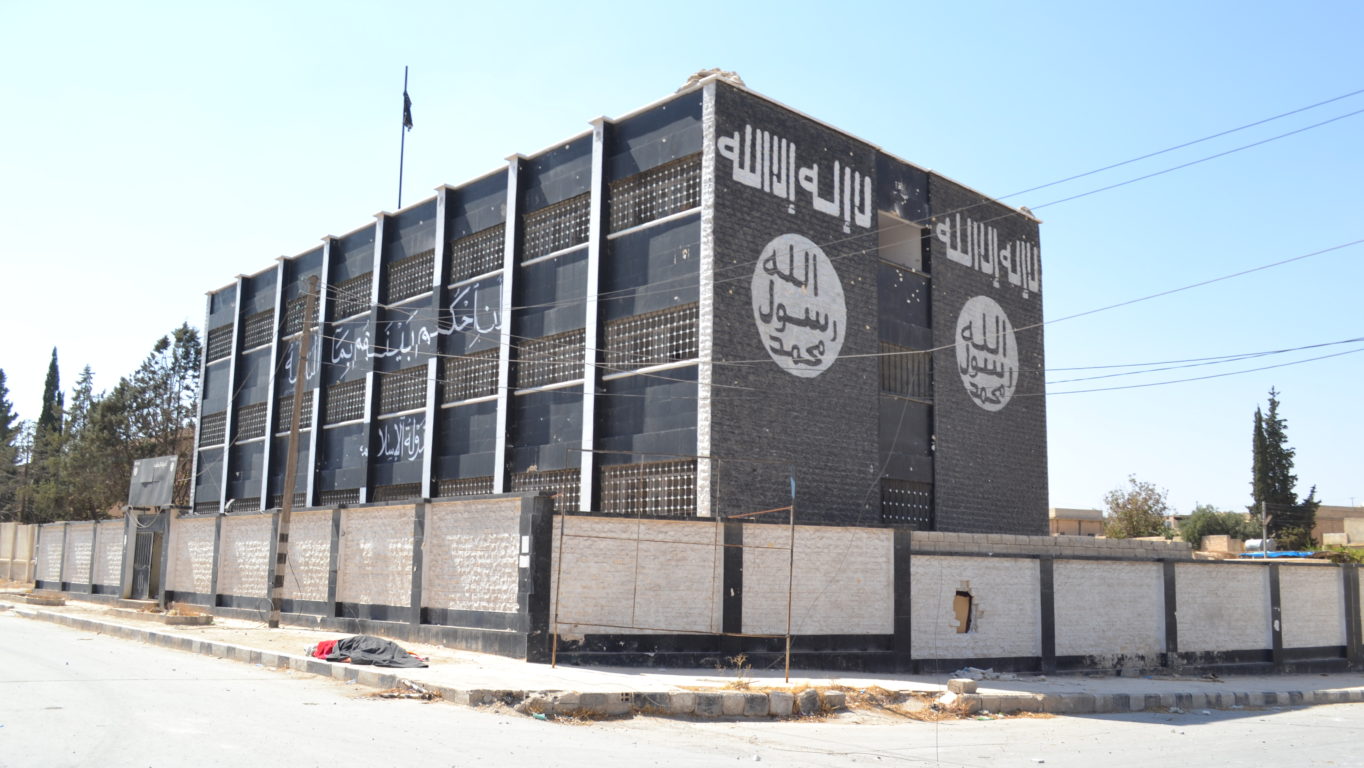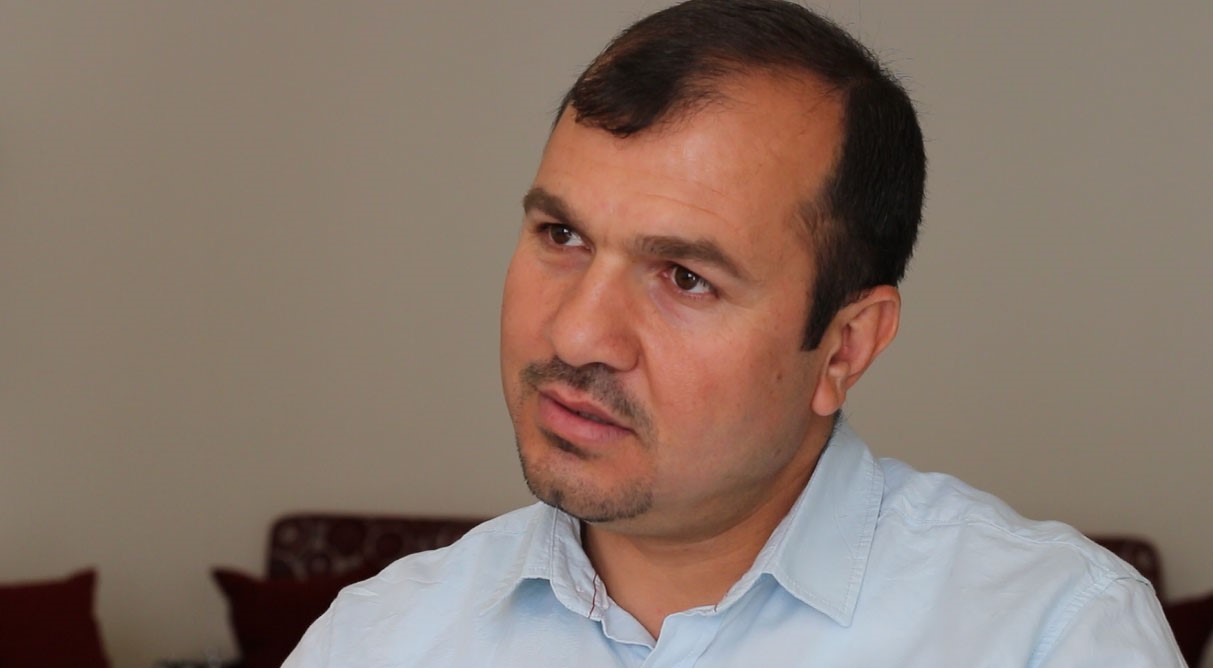The residents of the western part of the city of Dayr az-Zawr, which is under the control of the Syrian regime, live with constant water and power cuts as well as a lack of services. However, those on the other side don’t have it any easier. Living under the control of the Islamic State (IS), residents of eastern Dayr az-Zawr also suffer from a lack of medical aid, gas, and basic food staples after the extremist group lost control of all crossing points it had into Turkey this past summer. Furthermore, both IS and the regime restrict the movement of residents.
The city of Dayr az-Zawr is located on the Euphrates river in proximity of the Syrian-Iraqi border. It is an estimated 33,000 km2 of which the Syrian army controls a third, which consists of the western side and few neighborhoods in the east. The army also controls the civilian airport, the central prison, the government buildings, the 137th brigade, and the Tala’iʿ barracks. Yet this part of the city has been under siege for almost two years now.
On January 14, 2017, IS was able to divide the Syrian army territories, consequently isolating the airport from the western side of Deyr az-Zawr in what was the most violent attack in almost a year.
Under Siege
With the start of the winter season, civilians living in the army-controlled section of the city face adversity in light of the continuous siege. Mariam1 is a government employee in her early forties and a mother of three. She resides with her kids and husband in the army-controlled neighborhood of al-Jurah.
She told SyriaUntold on Skype that civilians have adapted to their new reality of having less meals a day as well as less food per meal, which she described as being less than half the standard portion.
“We now cook greens for our soup instead of lentils, and have switched to beans and canned food instead of rice and bulgur,” she explained. “There are many days when we skip breakfast for the lack of bread or anything at all to eat.”

When asked about price increases, she jokingly said: “It's been three months since we last had Fattush [a typical kind of salad] because tomatoes are too expensive and there is no bread. We haven’t had meat in a while and we miss it.”
Mariam added that the decline in the living conditions was due to the yo-yoing of the US dollar, which inflates the prices of food staples and vegetables. Today, one US dollar in Dayr az-Zawr is worth 515 Syrian Pound (SYP) as compared to pre-2011 when it was 47 SYP.
The director of the Justice for Life Organization in Dayr az-Zawr (JFL), Jalal al-Hamad, who currently resides in Turkey, told SyriaUntold that the observatory has documented at least 35 civilian deaths in two years (2015-17) in the besieged western part of the city due to malnutrition.
Currently, the JFL team is stationed in Turkey and covers news of both the eastern and western parts of Dayr az-Zawr, as well as the countryside surrounding it, via a network of journalists and collaborators residing within the city. They have several ways of getting the news out, including via letters delivered by those escaping the city.
There are about 90,000 trapped civilians there, according to JFL, half of which are women and children. Al-Hamad told SyriaUntold that “since April 10, 2016, the World Food Program (WFP) started sending aid to the besieged neighborhoods and the United Nations dropped a 4.6-tonne medical aid shipment; however, these amounts are not sufficient to cover the needs of besieged civilians.”
Between January 15 and 29, 2017, the WFP has temporarily suspended humanitarian aid to the besieged areas of Dayr az-Zawr due to military clashes and the advancing of IS.
Strict Rules in IS Territories
The IS rule is not limited to most of the eastern part of the city, it also includes all of the eastern rural areas all the way to the Iraqi border, reaching the towns of Moshen, al-Bukamal and al-Mayadin, before it veers west to the town of al-Maadan that is part of Raqqa Province.
IS members enforce movement restrictions on residents, force women to have a “mahram” (an unmarriageable male kin) should they need to leave their homes, and condition that any travel outside of IS territories has to be supported by medical reports that are referred to the security committee.
Khadija (24) was a senior student at the al-Furat University before IS took over the city in the summer of 2014. The Hisba (IS religious police) accused her once of having committed a Sharia violation, and consequently, she had to attended a Sharia course for a month.
In such dire circumstances, abiding by IS laws is not only frustrating but often unaffordable. Khadija explained via Whatsapp that, during the session, the supervisor ordered all attending women to adhere to the Sharia law dress code, even though the required black robe “costs a lot, up to 15,000 SYP [approximately 30 USD], and most women are unable to buy it, especially if there is more than one woman in the household.”

In addition to IS harassing the residents of Dayr az-Zawr, the people there also suffer from a severe lack in services.
Mariam, who lives in the army-controlled area, said that there is a severe shortage in medicine. “The pharmacies are empty, even cough medicine, diabetes medicine and baby formula are almost out. And if any is available, it’s prohibitively expensive.”
On the other hand, Khadija, who resides in IS territory, said that there is only one open pharmacy where she lives. “Since last summer, residents with heart and eye conditions, and those down with the flu have been suffering from the lack of medication. It is rare to find a specialized doctor or a functioning hospital.”
JFL Director al-Hamad told SyriaUntold that there is a rise in the number of medical cases on both sides of the city, mostly Hepatitis A and B, chronic diseases, malnutrition, and women’s reproductive diseases, especially among expectant and new mothers.
He added that, in the army-controlled areas, “the only functional hospital is the military hospital, which mostly admits wounded soldiers or militia members,” noting that “the Red Crescent clinic provides better medical services,” especially after the Asad governmental hospital was heavily damaged by IS shelling and put out of service by the end of the summer of 2015.
As for IS territories, al-Hamad confirmed that “most of the medical staff has left. There are no specialists there, and it’s rare to find a radiologist or a lab technician at a medical point or clinic.”
Impossible to Leave
Both the army and IS deny civilians free movement from and into their respective areas, as well as out of Dayr az-Zawr altogether. The regime requires anyone wishing to depart via an army plane to have security approvals from the intelligence branches, knowing very well it’s the only way to leave the city. However, Mariam, who wanted to travel to Damascus to visit her family, has been denied this kind of permit.
As for IS, its members interrogate and harass those wishing to leave the city and confiscate documents and properties to stop civilians from leaving. At the end of her interview with SyriaUntold, Khadija said: “My uncle’s family wanted to move to al-Hasakeh, but IS called them in, interrogated them and threatened to confiscate their ID papers as well as their property. They were forced to give up.”
Since mid-January, there have been heated military clashes between IS and regime forces in Dayr az-Zawr, which warns of a cold winter with heated clashes that will only increase the suffering of the blockaded residents.
[Main photo: A man from Dayr az-Zawr sits in the Raj al-Salibi desert at the Syrian-Iraqi border waiting to enter the Al-Hawl camp in al-Hasakah - 25-10-2016 - (Kamal Sheikho/ Syria Untold)].




